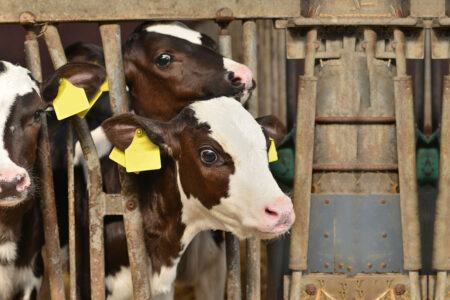Stress? It's safety, silly!
A new view of stress as a default response throws current theory upside down. Not something present (a stressor) triggers a stress response, but something missing (information on safety) unleashes it, keeping it disinhibited as long as safety is missing or unclear.
How can chronic stress make us sick?
In my previous blog I noted a lack of understanding in current stress science of chronic stress responses, e.g., continuously high heart activity, blood pressure, disrupted hormonal and immune responses and much more. I ended by stating that ‘in explaining the disease risk of chronic stress we have been wrong all along’. Now, let’s see what I mean by this. For me, a new insight started several years ago with … a starling.
Not being able to wash your feathers
An English study showed that when a starling does not have access to water to clean its wings it becomes stressed. For me as a stress researcher this struck me. Where was the stressor, the threat to trigger the stress response? The point is that many birds aren’t safe without a washing opportunity. With unclean feathers, you can’t flee as quickly from a predator, or when food is spotted you may not be as swift as your fellow winged ones. So, without an opportunity to wash you have to be more alert and release the stress response a bit. Even when no stressors are present. Those who do so pass on their genes more often to next generations.
Safety
It occurred to me and my colleagues Bart Verkuil and Julian Thayer that stress responses were the result of the lack of safety rather than the presence of a stressor. There are many forms of safety, the list of these often specific and very concrete contextual needs for survival is endless. Cats get stressed when there is no hiding place, even without stressors present - just a cardboard box is enough. Rats feel unsafe in the light, again even without any stressors. They also get stressed in deprived environments. Pigs and boar need to root; without rooting opportunity they appear stressed. Camouflage-dependent animals need their specific background and so on. Horses need to run to keep in good shape (at least 17 km a day, a source claims). Indeed, a fit body is a general need for all living organism - healthy, not too old and with clean feathers - just like the needs for open information channels (sound, vision, olfactory, touch, taste etc.), predictability (i.e., not too much novelty) and more. When satisfaction of any of these ‘non-negotiable’ needs is thwarted, a chronic stress response may ensue, because safety is at stake.
Feeling unsafe in a safe world
Back to humans. Despite the fact that modern life is so much safer than the ancestral one, a lack of information about social safety is missing in several of the situations with high chronic stress levels mentioned in my previous blog: in loneliness, low social economic status, discrimination, marital stress, early life stress, chronic anxiety etc.. Take loneliness. In itself is not a threat, but lonely people are lacking in something important: a supportive, safe social network. This is so crucial to so-called social animals that they all (baboons, sheep, horses, rats and many other rodents, many birds etc.) show enhanced stress levels when alone, and a shorter lifespan. Even fruit flies die earlier if they are on their own!
Are they friendly?
Interestingly, researchers often use a public speech as a stressor, that can dramatically increase blood pressure and cortisol. But why? Nobody expects the audience to attack. Instead, the thing at stake is social safety. I vividly remember my very first talk for an audience of unknown professors. Terrified, at the preceding lunch I couldn’t even swallow a simple ‘broodje kroket’ (a Dutch traditional snack). But after a friendly chat with some of the professors while walking down to the lecture hall, nearly all my stress had vanished! The stress was largely due to the lack of information about social safety: are they friendly? That was important for our ancestors and is important for us now. Lonely persons continuously miss social safety, just as discriminated persons do. Chronic anxiety implies missing many forms of safety. And so on. Stress? It’s safety, stupid! (For the young: this is with a nod to Bill Clinton’s famous 1992 campaign slogan).
No safety learned
Those with early life stress deserve special attention. They have insufficiently learned safety in the period in life that is most decisive for this. Unsurprisingly, as adults they often still show wariness and enhanced stress levels. Even more grim: those whose mothers were stressed during pregnancy also show signs of continuously enhanced stress levels.
The stress response is default: it’s ‘on’ unless safety is clear
So, a lack of information about safety is crucial for chronic stress. Does this change our insight into how the stress system works? Yes, it does. In this new view, we consider the stress response to be ‘on’ by default, only to be inhibited when safety is (unconsciously) perceived. This is supported by recent neurobiological and evolution-theoretical insights. The prefrontal cortex normally suppresses the parts of the brain responsible for the stress response, especially the amygdala, with minimal energetic costs, but only when the brain has perceived safety.
Not triggered but unleashed
Let’s be clear here. Nothing triggers the stress response, not even lack of safety. It is disinhibited or unleashed when safety is lacking. Such as when no protective group is available or a lion is actually approaching (a sudden severe drop in safety). But crucially, it is already on when there is as little as merely no information about safety – irrespective of any danger being present. So, it is a default response: the response reverted to when no relevant information is available – relevant information being information about safety. This way the organism is optimally sure about its survival.
Better safe than sorry
Evolution theorists agreed long ago on a closely related idea, often calling it erring on the side of caution. Organisms have survived in evolution not by waiting for more evidence of threat but by being ‘better safe than sorry’. A rabbit better run away from the faintest and erroneous signs of a buzzard, than remain sitting once too often and become its lunch. Organisms who were ‘on edge’ in this way, and remained wary even with the slightest uncertainty still present, passed on their genes. The default stress response is thus phylogenetically very old and similar across many species. There is no reason to ignore its presence anymore in humans, and we should accept that it is still basically unconscious!
GUTS: Generalized Unsafety Theory of Stress
Thus, instead of asking ‘why are we stressed?’ stress science should ask ‘why can’t we switch our stress response off?’ The answer that we propose is: because we often - largely unconsciously - do not perceive safety, and therefore assume generalized unsafety. Finally: all of the above is formalized in the Generalized Unsafety Theory of Stress (GUTS) and can be read about in International Journal of Environmental Research and Public Health, Perspectives on Psychological Science, Neuroscience and Biobehavioral Reviews, and Journal of Anxiety Disorders.





